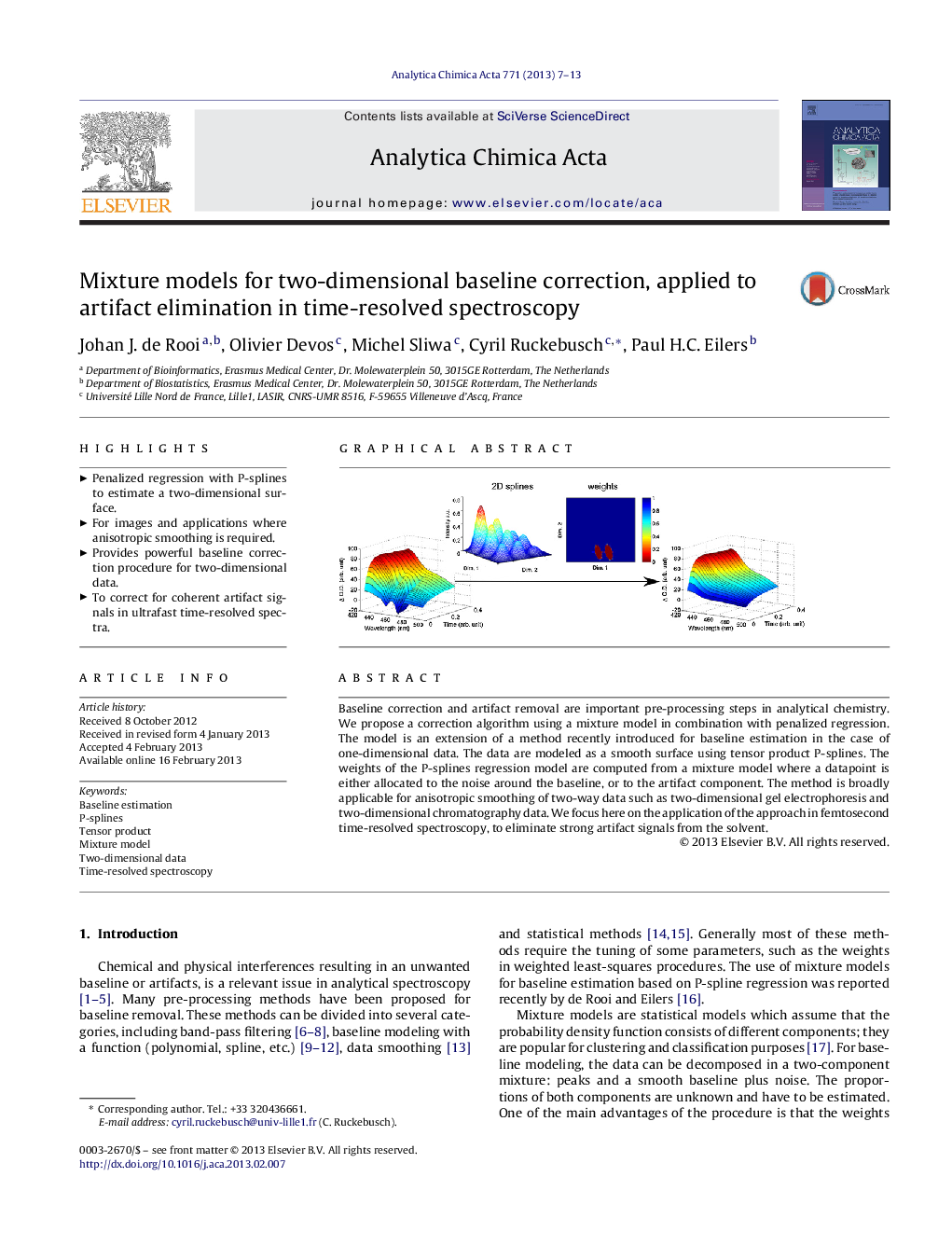| Article ID | Journal | Published Year | Pages | File Type |
|---|---|---|---|---|
| 1165007 | Analytica Chimica Acta | 2013 | 7 Pages |
Baseline correction and artifact removal are important pre-processing steps in analytical chemistry. We propose a correction algorithm using a mixture model in combination with penalized regression. The model is an extension of a method recently introduced for baseline estimation in the case of one-dimensional data. The data are modeled as a smooth surface using tensor product P-splines. The weights of the P-splines regression model are computed from a mixture model where a datapoint is either allocated to the noise around the baseline, or to the artifact component. The method is broadly applicable for anisotropic smoothing of two-way data such as two-dimensional gel electrophoresis and two-dimensional chromatography data. We focus here on the application of the approach in femtosecond time-resolved spectroscopy, to eliminate strong artifact signals from the solvent.
Graphical abstractFigure optionsDownload full-size imageDownload as PowerPoint slideHighlights► Penalized regression with P-splines to estimate a two-dimensional surface. ► For images and applications where anisotropic smoothing is required. ► Provides powerful baseline correction procedure for two-dimensional data. ► To correct for coherent artifact signals in ultrafast time-resolved spectra.
